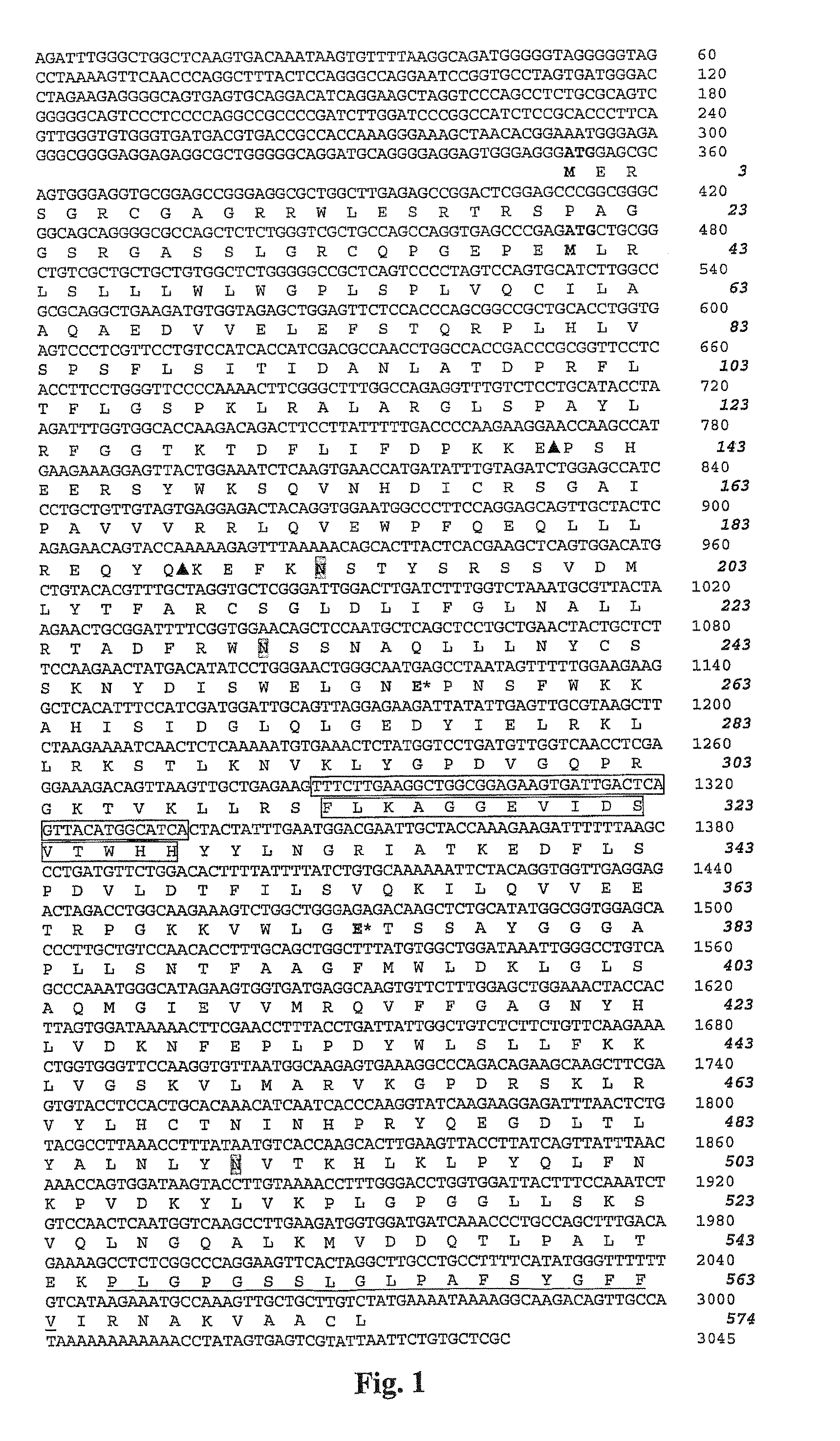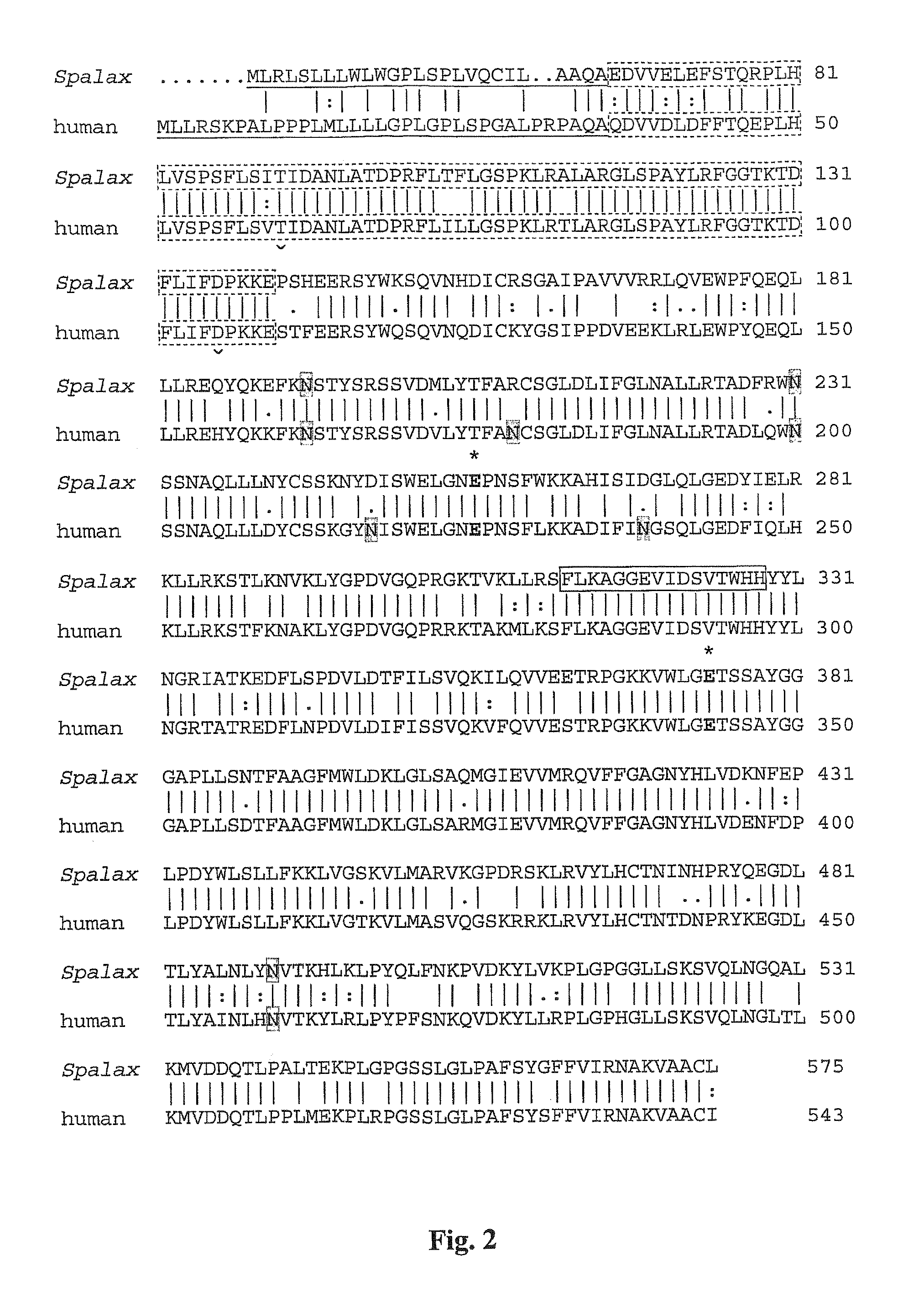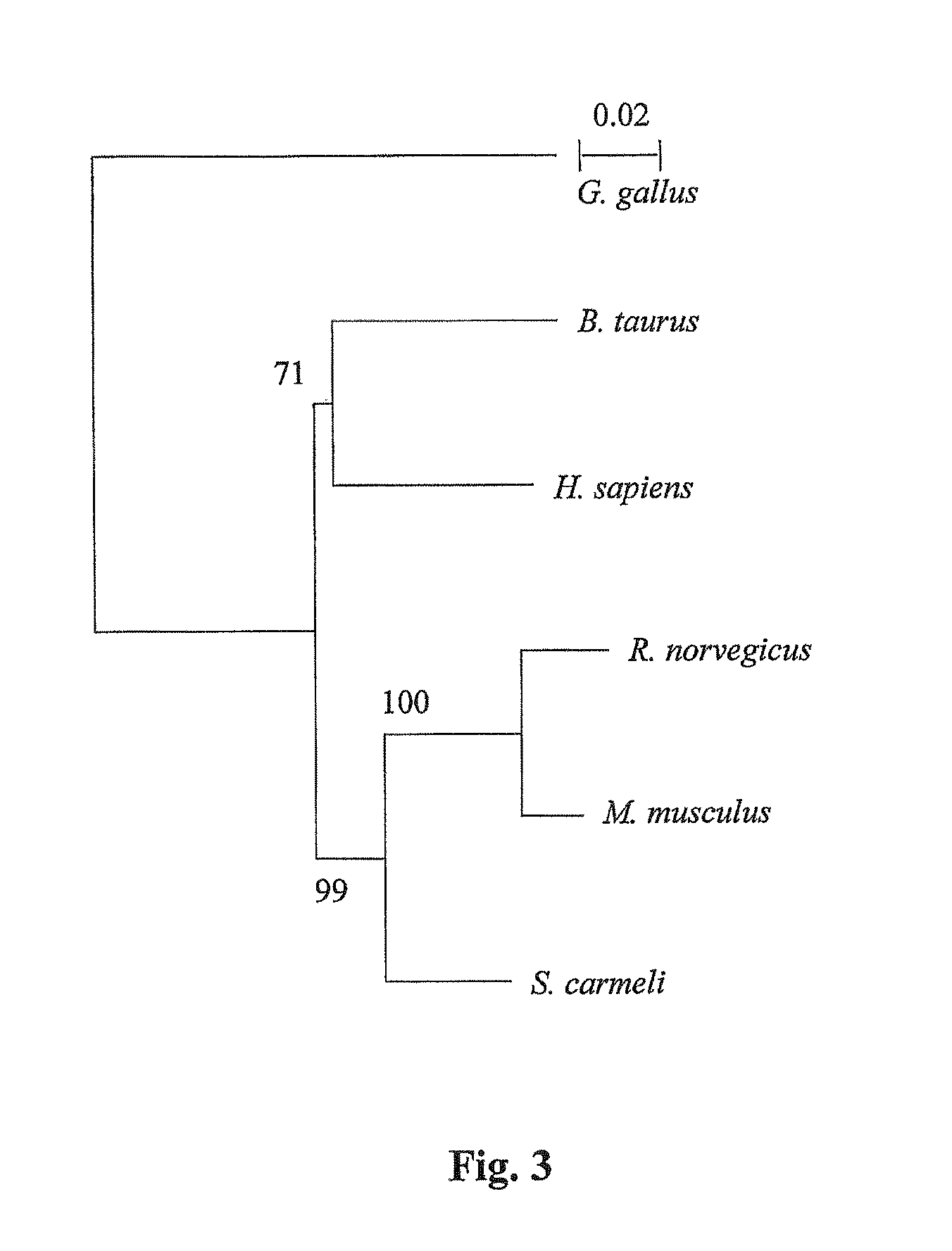Heparanases and splice variants thereof, polynucleotides encoding them and uses thereof
a technology applied in the field of heparanase and splice variant, can solve the problems of increased tumor growth and metastasis formation, and achieve the effect of high alternative splicing ra
- Summary
- Abstract
- Description
- Claims
- Application Information
AI Technical Summary
Benefits of technology
Problems solved by technology
Method used
Image
Examples
example 1
Cloning of the Spalax Heparanase cDNA
[0135]The full length Spalax heparanase cDNAs (including 351 nucleotides in the 5′UTR and 74 nucleotides in the 3′UTR) from the four Israeli species were obtained and sequenced (FIG. 1, SEQ ID NO:69). The sequences presented in FIG. 1 (nucleic acid sequence SEQ ID NO: 69 and amino acid sequence SEQ ID NO:1) are that of S. carmeli (2n=58). The amino acid sequences of the other species vary in a few amino acids (S. judaei, Arg285 is substituted to Lys, Cys483 to Val, Gly548 to Arg; S. galili Glu190 to Asp, Gly548 to Arg; S. golani, Ala404 to Ser, Gly548 to Arg) and are otherwise identical.
[0136]The cloned Spalax heparanase (FIG. 1) contains two initiation codons (ATG1 and ATG2) of which ATG2 corresponds to that of heparanase cloned from other species. The open reading frame starting from ATG2 consists of 1602 bp that encode for a polypeptide of 534 amino acids (compared to 543 amino acids of the human protein). Alignment of the amino acid sequences...
example 2
Identification and Cloning of a Splice Variant of Spalax Heparanase Lacking Exon 7
[0139]A splice variant of Spalax heparanase was cloned from Spalax kidney. Sequence analysis revealed that it originates from splicing-out of exon 7 (37) (nucleotides 1287-1334), resulting in shortening of the wild type cDNA by 48 base pairs with no frame-shift (FIG. 1). Gel electrophoresis of PCR products amplified using primers designed around this deletion segment and kidney cDNA as a template, revealed both the wild type and spliced forms. Plasmids containing the coding region of either form were subjected to PCR and used as positive controls (FIG. 4A). The amino acid sequence of the splice variant lacks 16 amino acids in comparison to the wild type protein, the deletion located in a region between the nucleophile and proton donor residues (Phe313-His328) (FIGS. 1 & 2).
[0140]To evaluate the tissue distribution of heparanase and its splice variant in Spalax, cDNAs from different tissues were prepare...
example 3
Functional Expression of Wild Type and Splice Variant SH7 Spalax Heparanases in Mammalian Cells
[0141]The full length human and Spalax heparanase cDNAs, as well as Spalax splice variant SH7 cDNA, were subcloned into the expression vector pcDNA3 and transfected into HEK293 cells. Stable transfected cells were obtained following selection with G418. Western blot analysis of wild type Spalax heparanase partially purified from cell lysates (utilizing anti heparanase antibody #1453 which recognizes both the unprocessed and processed enzyme) revealed 60- and 45-kDa protein bands (FIG. 5A, lane 3) compared with the 65- and 50-kDa latent and active forms of the human enzyme (FIG. 5A, lane 2). In order to evaluate the contribution of glycosylation to the molecular weight difference between the human and Spalax heparanases, cells stably transfected with each heparanase species were incubated (48 h, 37° C.) without or with 10 μg / ml tunicamycin (N-glycosylation inhibitor). Western blotting of ce...
PUM
| Property | Measurement | Unit |
|---|---|---|
| pH | aaaaa | aaaaa |
| Tm | aaaaa | aaaaa |
| temperature | aaaaa | aaaaa |
Abstract
Description
Claims
Application Information
 Login to View More
Login to View More - R&D
- Intellectual Property
- Life Sciences
- Materials
- Tech Scout
- Unparalleled Data Quality
- Higher Quality Content
- 60% Fewer Hallucinations
Browse by: Latest US Patents, China's latest patents, Technical Efficacy Thesaurus, Application Domain, Technology Topic, Popular Technical Reports.
© 2025 PatSnap. All rights reserved.Legal|Privacy policy|Modern Slavery Act Transparency Statement|Sitemap|About US| Contact US: help@patsnap.com



